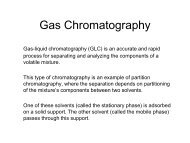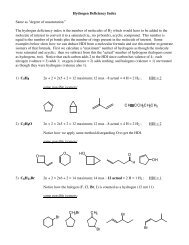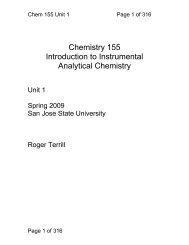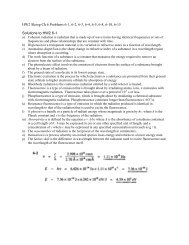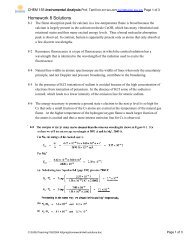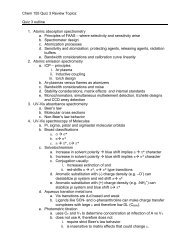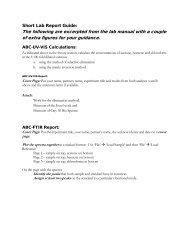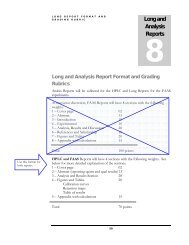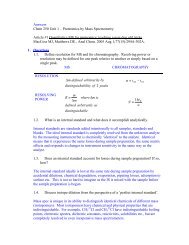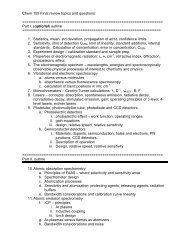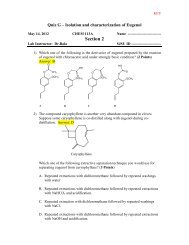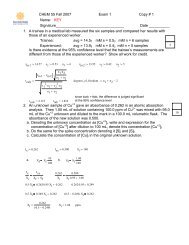Chemistry 155 Introduction to Instrumental Analytical Chemistry
Chemistry 155 Introduction to Instrumental Analytical Chemistry
Chemistry 155 Introduction to Instrumental Analytical Chemistry
You also want an ePaper? Increase the reach of your titles
YUMPU automatically turns print PDFs into web optimized ePapers that Google loves.
Chem <strong>155</strong> Unit 1 Page 48 of 3131.14.1 How does one deal with matrix effects?1. Make the sample and standard matrix as nearlyidentical as possible:matrix matchingBut – matrix matching requires that you already knowa lot about your ‘unknown’ – often not the case. So,the matrix-immune alternative <strong>to</strong> the calibration curveis <strong>to</strong>:2. Use the method of: standard additions:In other words, the assumption built in<strong>to</strong> thecalibration curve method is that the matrix effects arenegligible or identical for standards and samples. Ifthis can not be assumed, one must match the sampleand standard matrices.The way that the method of standards additions doeswith this is <strong>to</strong> dilute both standards and samples:in the same matrix (solution)Page 48 of 313



